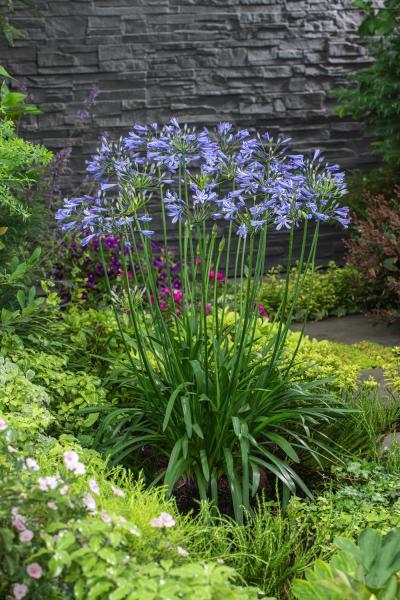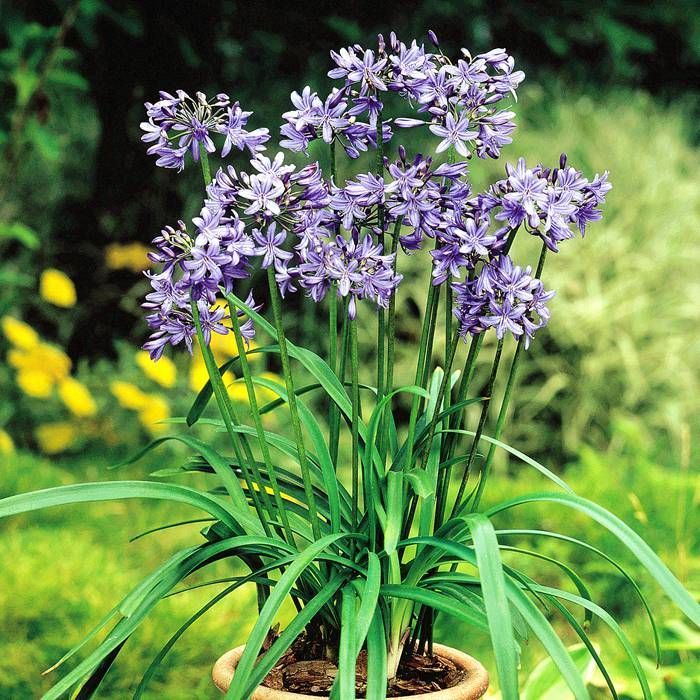Usual Agapanthus Troubles and Just How to Fix Them
Usual Agapanthus Troubles and Just How to Fix Them
Blog Article
Letting Loose the Secret to Successful Agapanthus Cultivation: Tips and Techniques for a Flourishing Garden
In the realm of gardening, growing agapanthus effectively requires a critical approach that encompasses various facets of plant care. With careful attention to detail, one can open the keys to supporting these magnificent blossoms, bring about a yard that prospers with appeal and vibrancy. By recognizing the subtleties of agapanthus growing, one can produce an atmosphere where these plants prosper and flower generously. In the complying with discussion, we will certainly discover necessary ideas and techniques that will guide you in the direction of a prospering agapanthus yard, using understandings right into finest techniques, dirt problems, watering methods, and more.
Growing Agapanthus: Finest Practices
When planting Agapanthus, appropriate dirt preparation is necessary for guaranteeing successful growth and development of these attractive blossoms. Agapanthus, typically called Lily of the Nile or African lily, prospers in well-draining soil with a slightly acidic to neutral pH degree - Agapanthus. Before growing, it is important to amend heavy clay soils with raw material such as garden compost or peat moss to enhance water drainage and supply necessary nutrients for the plants
To plant Agapanthus, choose an area that obtains complete sunlight to partial shade, as this will certainly promote healthy development and plentiful flowering. Dig a hole two times the size of the plant's origin ball and position the Agapanthus at the very same depth it was previously growing. Delicately backfill the opening with soil, weighing down strongly to eliminate any kind of air pockets around the roots.
Water the newly planted Agapanthus thoroughly and continue to maintain the dirt uniformly damp, specifically throughout the plant's active expanding season. Agapanthus. Applying a balanced fertilizer once a month can further support the plant's development and flowering. By complying with these ideal practices for planting Agapanthus, you can develop a stunning display of these captivating blossoms in your yard
Ideal Soil Issues for Agapanthus
For optimum growth and growing success of Agapanthus plants, making sure the soil conditions are suitable is critical. Agapanthus thrives in well-draining dirt with a slightly acidic to neutral pH degree ranging from 6.0 to 7.0. This sort of dirt enables for ample water drainage, stopping waterlogging which can lead to root rot. To boost dirt drain, take into consideration adding raw material such as compost or peat moss when preparing the planting website. Moreover, Agapanthus chooses soil that is rich in nutrients, so incorporating a balanced fertilizer during the expanding period can promote healthy and balanced development and vibrant flowers.

Watering and Feeding Tips
To make certain healthy and balanced development and vibrant blooms, proper watering and fertilizing techniques are vital for effective Agapanthus growing. Agapanthus plants profit from routine watering, particularly throughout the expanding period. It is suggested to water deeply as soon as a week, making certain the dirt is damp however not soaked. During heat or in pots, more frequent watering might be required to stop the dirt from drying out totally.
When it concerns fertilizing Agapanthus, a well balanced fertilizer with equal parts nitrogen, phosphorus, and potassium can be applied in the spring to promote healthy development and blooming. Slow-release plant foods are optimal for supplying nutrients progressively over an extensive duration. Stay clear of over-fertilizing, as this can cause excessive vegetation growth at the expenditure of flowers.
Additionally, incorporating raw material like compost into the dirt can enhance nutrient degrees and enhance dirt structure, assisting in the overall wellness of the Agapanthus plants. By complying with these watering and feeding tips, garden enthusiasts can ensure their Agapanthus plants grow and create stunning displays of blossoms.
Pruning and Deadheading Methods
Appropriate pruning and deadheading methods play an important role in maintaining the wellness and appearances of Agapanthus plants, matching the essential methods of watering and feeding for successful growing. Trimming Agapanthus includes getting rid of spent blossom heads, read review dead or yellowing fallen leaves, and general shaping of the plant to advertise better development. Deadheading, the process of eliminating discolored flowers, not only improves the plant's look yet also encourages additional growing.
When deadheading Agapanthus, it is advisable to clip off the blossom stem at the base making use of sharp, clean shears. This process reroutes the plant's power from seed manufacturing back into root and foliage development, advertising a much healthier and a lot more robust plant. Routine deadheading can prolong the blooming period of Agapanthus and avoid self-seeding, which can bring about overcrowding.
In terms of trimming, Agapanthus usually take advantage of a light trim after flowering to clean the plant and motivate fresh development. Reducing the spent flower stems and eliminating any type of dead or damaged vegetation aids keep the plant's vitality and general look. Nevertheless, it is essential to avoid reducing right into the crown of the plant, as this can weaken its wellness.

Protecting Agapanthus From Pests and Diseases
Applying effective bug and disease monitoring techniques is crucial to safeguarding the health and wellness and vitality of Agapanthus plants in cultivation. One common pest that impacts Agapanthus is the Agapanthus borer, a caterpillar that tunnels right into the plant, causing damage to the fallen leaves and flowers.
Along with pests, Agapanthus are susceptible to illness such as origin rot and fungal fallen leave spots. These problems can often be avoided by ensuring appropriate water drainage and avoiding overwatering. If signs of disease appear, influenced components of the plant should be immediately gotten rid of to stop additional spread. Fungicides might additionally be made use of as a treatment procedure, adhering to the manufacturer's directions very carefully. By remaining vigilant and dealing with insect and illness concerns immediately, garden enthusiasts recommended you read can help their Agapanthus grow and grow.

Verdict
Finally, successful farming of agapanthus requires proper growing techniques, ideal soil conditions, appropriate watering and fertilizing, normal trimming and deadheading, and security from illness and pests. By complying with these suggestions and tricks, garden enthusiasts can guarantee a flourishing garden loaded with gorgeous agapanthus flowers. Agapanthus. Bear in mind to keep regular care and interest to detail to advertise the health and wellness and durability of these magnificent plants
When planting Agapanthus, proper dirt prep work is important for making sure successful growth and advancement of these lovely blossoms.Water the recently grown Agapanthus thoroughly and proceed to keep click to read more the soil uniformly damp, specifically during the plant's active growing period.For optimum growth and blooming success of Agapanthus plants, ensuring the soil conditions are perfect is important. When planting or transplanting Agapanthus, make certain the soil is well-prepared to provide the necessary foundation for the plants to develop themselves efficiently. One usual bug that impacts Agapanthus is the Agapanthus borer, a caterpillar that tunnels right into the plant, creating damages to the flowers and fallen leaves.
Report this page